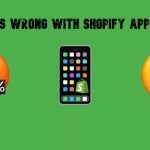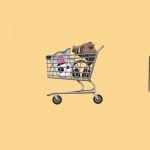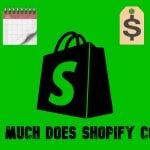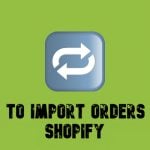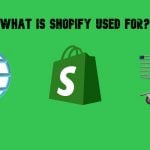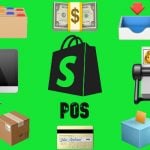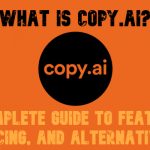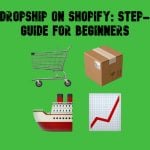The Ultimate eCommerce Glossary of Terms: 100+ Must-Know Definitions for 2025

You are living in the ever-evolving world of eCommerce, where staying informed about industry terminology is crucial. It’s not about a competitive advantage or success. It’s about mere survival. Whether you’re scaling a startup or refining your enterprise, understanding key terms like “API” and “dynamic pricing” can help you navigate a steep eCommerce terrain.
This ultimate eCommerce glossary of terms breaks down over 100 essential definitions for 2024 — explained clearly, with examples — to help you navigate the complexities of online retail. Whether you’re a business owner, marketer, or digital enthusiast, these definitions will sharpen your eCommerce acumen and keep you ahead of the curve.

A
- Affiliate Marketing: A performance-based strategy where affiliates (partners) promote a company’s products and earn a commission on each sale. For instance, Amazon’s affiliate program enables bloggers and influencers to embed product links in their content. When readers click through and make a purchase, the affiliate earns a percentage of the sale, making it a popular method for monetizing blogs and social media channels. Shopify Collabs pushes this effort even further by introducing built-in opportunities for merchants to find influencers and collaborate.
- AI (Artificial Intelligence): The simulation of human intelligence in machines that are designed to perform tasks that typically require human cognition, such as learning, problem-solving, and decision-making. AI in e-commerce powers personalized recommendations, chatbots, and even predictive analytics to optimize the customer experience. Discover the most popular tools here: Best AI Tools for 2025.
- Analytics: Tools and techniques used to analyze data generated by website visitors, including user behavior, traffic sources, and conversion rates. For example, Google Analytics allows an e-commerce store to track the number of visitors from different marketing channels—like social media, paid ads, and organic search—enabling the business to focus efforts on the most profitable sources.
- AOV (Average Order Value): The average amount a customer spends in a single transaction. A higher AOV typically indicates a successful cross-sell or upsell strategy. For instance, an online bookstore may find that customers spend an average of $35 per order. To boost this figure, they introduce a promotion offering free shipping on orders over $40, which encourages shoppers to add one more item to their cart. Read more about the true AOV meaning.
- API (Application Programming Interface): An API allows different software applications to communicate with each other. In e-commerce, APIs are used to connect a store’s system to payment gateways, shipping providers, or inventory databases. Imagine you’re running a Shopify store and want to automatically update product stock levels. By integrating an API from your warehouse management system, your inventory will sync seamlessly without manual updates.
- AR (Augmented Reality): AR is a technology that overlays digital content, such as images, sounds, or data, onto the real world, enhancing the user’s perception and interaction with their environment. Unlike virtual reality, which creates an entirely immersive digital experience, AR blends virtual elements with the physical world in real time. AR tools are often used in ecommerce. For instance, you can use these Magento AR extensions to implement the latest technologies.
B
- Beauty Ecommerce: The process of selling and promoting beauty and personal care products through digital platforms
- Buy Now, Pay Later (BNPL): A financing option that lets customers purchase products and pay for them in installments, often interest-free. For example, a clothing retailer integrates Klarna, a popular BNPL service, allowing a customer to buy a $200 coat and split the payment into four manageable installments of $50. This option boosts conversion rates, particularly for high-ticket items, as it lowers the initial financial commitment for buyers.
- B2B (Business-to-Business): A model where a business sells products or services to other businesses, rather than individual consumers. For example, a wholesaler of office supplies might sell bulk paper, pens, and printers to a corporate buyer, rather than to individuals, allowing the buyer to restock supplies for an entire office. Magento 2 B2B features introduce lots of new opportunities compared to the B2C suite.
- B2C (Business-to-Consumer): A model where businesses sell directly to individual consumers. For instance, a fashion retailer selling shoes directly to customers through its online store is a typical B2C model. The business focuses on creating a seamless shopping experience and personalized marketing to increase sales and customer loyalty.
C
- CLV (Customer Lifetime Value): It is the total revenue a business can expect to generate from a customer throughout their entire relationship. It helps companies determine how much they should invest in acquiring and retaining customers by considering factors like purchase frequency, average order value, and retention rate.
- CMS (Content Management System): A software platform that enables users to create, manage, and modify digital content on a website without needing extensive coding knowledge. E-commerce businesses often use CMS platforms to easily update product listings, blogs, and static pages. For example, using a CMS like WordPress or Shopify, an online retailer can not only create product pages but also quickly build and maintain a “Meet the Team” page to introduce their key staff.
- Collaborative Commerce: It refers to a business model where multiple merchants or partners work together to enhance their product offerings, streamline operations, and share resources to better serve customers. An example is Shopify Collective, an e-commerce tool that enables Shopify retailers and suppliers to form partnerships, allowing retailers to sell products from other stores while suppliers benefit from expanded market reach without additional inventory or marketing costs.
- Conversion Rate: The percentage of website visitors who complete a desired action, such as making a purchase or signing up for a newsletter. A high conversion rate often signals a well-optimized site. For example, a niche skincare brand might find that out of 1,000 visitors, 50 make a purchase, resulting in a conversion rate of 5%. By simplifying the checkout process and offering free shipping, the brand could further increase this figure.
- CRM (Customer Relationship Management): Software that helps businesses manage interactions with current and potential customers. For instance, an e-commerce brand using Salesforce can track every interaction a customer has with the company—from email open rates to previous purchases. This helps the brand send targeted email campaigns, such as recommending products based on a customer’s browsing history, improving both retention and customer satisfaction.
- CRO (Conversion Rate Optimization): The process of turning your casual website visitors into actual customers, subscribers, app downloaders, or whatever goal you have in mind is conversion optimization. Major e-commerce platforms are equipped with CRO tools that you can leverage for free.
- Cross-selling: A strategy used to encourage customers to buy additional, complementary products. For instance, when a customer adds a laptop to their shopping cart at an electronics store, the site might recommend a protective laptop case or external mouse, both of which enhance the original purchase and increase the total sale value.
D
- Dynamic Pricing: A strategy where prices fluctuate based on demand, time of day, or other factors. For instance, an online electronics store uses dynamic pricing to adjust prices hourly based on demand spikes during Black Friday. The store lowers prices early in the day to attract more shoppers and gradually increases them as stock dwindles, maximizing revenue while keeping pace with customer interest.
- Discount Code: A promotional tool that gives customers a discount when entered at checkout. For example, an online fashion retailer might offer a 15% discount code as part of their email marketing strategy. The code entices customers to return to the site and complete their purchases, increasing customer retention and driving sales during slow periods.
- Direct-to-consumer (DTC): A model where brands sell directly to consumers, bypassing third-party retailers or wholesalers. For instance, Warby Parker revolutionized the eyewear industry by selling glasses directly to customers through their website. This allows the company to keep prices lower than traditional brick-and-mortar stores and to build a stronger relationship with its customer base by controlling the shopping experience from start to finish.
- Domain: A store domain is the web address (URL) that customers use to access your online store. It serves as the digital location of your e-commerce business, making it a critical element of your brand identity. Follow our Shopify Domain guide for more information.
E
- E-commerce Platform: Software that allows businesses to build and manage their online stores. For instance, Shopify enables small businesses to create fully functional e-commerce websites, handle payments, manage inventory, and track orders, all from a user-friendly dashboard. Read our Magento vs Shopify key highlights for more.
- Email Marketing: A strategy that uses email to promote products, services, or content. For example, an online clothing store might send out weekly newsletters featuring new arrivals and exclusive discounts to encourage subscribers to shop directly from the email.
- ERP (Enterprise Resource Planning): Software that integrates various business processes, such as finance, supply chain, and HR, into a single system. In an e-commerce context, ERP helps automate inventory management, order processing, and accounting, reducing manual workload. For instance, a growing e-commerce brand might implement SAP ERP to streamline everything from product sourcing to fulfillment.
- Exit-Intent Popup: A feature that detects when a visitor is about to leave a website and displays a targeted message, often with an incentive to stay. For example, an online store might trigger an exit-intent popup offering 10% off to a customer who is about to abandon their cart, successfully reducing abandonment rates.
F
- FedEx: FedEx is a global leader in transportation and logistics, offering services that range from express shipping to printing. Its programs, such as the FedEx Small Business Grant, empower entrepreneurs with funding and resources.
- Fulfillment: The process of storing, packing, and shipping products to customers. For instance, Amazon has revolutionized fulfillment with its vast network of warehouses and Fulfillment by Amazon (FBA) service, which handles everything from inventory storage to shipping on behalf of sellers.
- Free Shipping Threshold: A minimum order value a customer must reach to qualify for free shipping. For example, a beauty retailer might offer free shipping on orders over $50, encouraging customers to add one or two more items to their cart to avoid shipping fees.
- Flash Sale: A time-sensitive discount on products, designed to create urgency and drive immediate sales. For instance, an online shoe store might run a 24-hour flash sale on summer sandals, offering 40% off, driving a quick influx of sales before the season ends.
- Fraud Prevention: Tools and techniques used to detect and prevent fraudulent transactions in e-commerce. For example, a merchant might use address verification services (AVS) and two-factor authentication (2FA) to reduce the risk of credit card fraud during checkout.
G
- Gateway (Payment Gateway): A service that authorizes and processes credit card payments for e-commerce transactions. For instance, Stripe is a popular payment gateway that allows online businesses to accept payments securely, integrating with most e-commerce platforms to handle everything from authorization to encryption.
- Ghost Commerce: It is an e-commerce model that enables businesses to sell products without managing inventory, relying instead on digital storefronts and third-party fulfillment. By focusing on brand-building and audience engagement, ghost commerce generates revenue through methods like affiliate marketing, dropshipping, and content-driven strategies.
- Growth Hacking: A set of marketing strategies focused on rapid growth using data, testing, and creativity. For example, an online subscription service might use A/B testing on its landing pages to determine which headlines and layouts drive more conversions, enabling it to scale its customer base quickly.
- Geotargeting: A marketing tactic that delivers specific content or promotions based on a user’s geographic location. For instance, an online retailer might offer free shipping to customers in specific countries or display region-specific product recommendations.
H
- Headless Commerce: A type of e-commerce architecture where the front end (user interface) is decoupled from the back end (functionality). For example, a large e-commerce retailer might use a headless approach to deliver a seamless, custom user experience across multiple devices—website, mobile app, and voice assistants—while managing all backend operations through a single platform.
- Hyper-Personalization: An advanced form of personalization that uses real-time data and artificial intelligence to tailor content, product recommendations, and marketing to individual users. For example, Netflix’s recommendation engine uses hyper-personalization to suggest shows based on a user’s viewing history, driving customer engagement and retention.
- Holiday Marketing: A targeted marketing strategy around major holidays to boost sales. For example, an online gift shop may launch a special Valentine’s Day campaign with limited-edition products and themed email marketing to capitalize on the holiday shopping rush.
I
- Impulse Buys: Impulse buys are unplanned, spontaneous purchases driven by emotions or a sudden urge, often triggered by attractive deals, product recommendations, or limited-time offers.
- Inventory Management: The process of tracking and managing a company’s stock levels, orders, sales, and deliveries. For instance, an online clothing retailer uses inventory management software to ensure they never run out of popular sizes, and they can automatically reorder stock from suppliers when inventory levels get low.
- IP (Intellectual Property): Legal protections granted for creations of the mind, such as trademarks, patents, and copyrights, which are particularly important in e-commerce for safeguarding brands. For example, a unique ecommerce logo for a digital goods store is protected under IP law, preventing competitors from copying or misusing it.
- Instant Checkout: A streamlined checkout process where customers can make a purchase with a single click, often by using saved payment information. For instance, Amazon’s “Buy Now” button allows customers to instantly complete their purchases using stored payment and shipping details, reducing friction and cart abandonment.
- In-Store Pickup: A fulfillment option that allows customers to buy online and collect their orders from a physical store. For example, a large retailer like Walmart offers customers the ability to shop online, pay, and pick up their items from the nearest store, combining the convenience of e-commerce with immediate product access.
J
- Just-in-Time Inventory (JIT): A strategy where inventory is restocked only as orders come in, reducing storage costs and the risk of excess stock. For instance, a furniture e-commerce company may use JIT by working closely with manufacturers to ensure that products are made and shipped only when an order is placed, optimizing warehouse space and lowering operating costs.
- Journey Mapping: The process of outlining a customer’s experience with a brand, from initial awareness to post-purchase interaction. For instance, an e-commerce brand might create a customer journey map showing how potential buyers discover their site via a Facebook ad, browse products, and eventually make a purchase, helping them optimize each touchpoint along the way.
K
- KPI (Key Performance Indicator): A measurable value that indicates how well a business is achieving its objectives. In e-commerce, common KPIs include conversion rate, AOV, and cart abandonment rate. For example, a subscription box service might track KPIs like monthly recurring revenue (MRR) to ensure they’re meeting growth targets.
- Keyword Optimization: The process of selecting and using the most relevant search terms to drive traffic to a website. For example, an online electronics retailer optimizes product pages with high-value keywords like “best 4K TVs” to improve their rankings on Google search results, driving more organic traffic.
L
- Landing Page: A standalone web page created for a specific marketing campaign, designed to capture leads or drive conversions. For instance, a beauty brand running a social media ad for a new skincare line might direct users to a dedicated landing page with information on the product and a limited-time discount offer to encourage purchases. You can use tools like ClickFunnels to create landing pages optimized for marketing purposes.
- Loyalty Program: A system that rewards customers for repeat purchases, encouraging brand loyalty. For example, Starbucks’ rewards program allows customers to earn points with each purchase, which can be redeemed for free items, fostering continued engagement and increasing the frequency of visits.
- Logistics: The management of the flow of goods from the supplier to the customer, including transportation, warehousing, and inventory. For instance, an e-commerce company might use third-party logistics (3PL) providers to handle shipping and warehousing, ensuring products are delivered to customers quickly and cost-effectively.
- Live Chat: A customer support tool that allows real-time interaction between customers and company representatives. For instance, an e-commerce store might offer live chat on their website to assist shoppers with questions about products, improving customer satisfaction and reducing cart abandonment.
M
- Macro Environment Factors: Macro environment factors are the external forces that shape the entire business landscape. These include economic conditions, technological advancements, legal regulations, social trends, and political stability. Macro factors are beyond a company’s direct control and require strategic adaptation to navigate successfully.
- Micro Environment Factors: Micro environment factors are the immediate, internal elements that directly impact a business’s daily operations. These include customers, suppliers, competitors, and other entities the company interacts with frequently. Because they are close to the business, companies can often influence or control these factors to optimize performance and respond quickly to market changes.
- Magento: A leading open-source e-commerce platform trusted by businesses of all sizes to build scalable, customizable online stores. Known for its flexibility, Magento 2 offers robust tools for managing products, customers, and orders across multiple storefronts. Efficient Magento 2 import & export processes are essential for keeping data organized and up-to-date, especially when handling large catalogs, bulk updates, or third-party integrations.
- MAP (Minimum Advertised Price): A policy where manufacturers set the lowest price at which a retailer can advertise a product. For instance, a consumer electronics brand may require online retailers to advertise its latest headphones at no less than $150, protecting the brand’s perceived value while preventing price wars.
- Marketplace: A platform where multiple sellers can offer their products to a large audience. Amazon and eBay are classic examples, where vendors list their items, and the marketplace handles transactions, customer service, and sometimes even fulfillment. Also, check this selection of eBay alternatives.
- MOQ (Minimum Order Quantity): The smallest number of units a supplier is willing to sell in a single order. For example, a printing facility may set an MOQ of 500 units for custom-branded t-shirts, meaning a small business must order at least that amount to secure a deal.
- Mobile Commerce (m-commerce): Buying and selling products through mobile devices like smartphones and tablets. For instance, a fashion retailer ensures its website is mobile-optimized to capitalize on the growing trend of customers shopping via mobile, especially during peak times like lunch breaks.
- MSRP (Manufacturer’s Suggested Retail Price): It is the price manufacturers recommend retailers charge for their products. Terms like SRP, RRP, and list price all refer to the same concept, ensuring pricing consistency across different sellers.
N
- Niche Market: A small, specialized segment of the market for a particular product or service. For instance, an e-commerce store might focus on selling eco-friendly pet products, catering to a specific audience of environmentally conscious pet owners, allowing them to dominate that niche with targeted marketing.
- Net Promoter Score (NPS): A metric used to measure customer satisfaction and loyalty by asking how likely customers are to recommend a brand to others. For example, an online subscription box service sends out surveys to gauge their NPS, using the feedback to improve service and customer retention.
- Native Advertising: Ads that blend into the content of a website or platform, often appearing less intrusive than traditional ads. For example, a tech brand might create a sponsored article on a gadget review site about the benefits of its new wireless earbuds, seamlessly fitting into the editorial content.
O
- Omnichannel Retailing: A sales approach that integrates multiple channels—online, mobile, and in-store—to provide a seamless shopping experience. For instance, a customer might browse products on a brand’s website, purchase through a mobile app, and return the product in-store, all while having a consistent brand experience across platforms.
- Order Management System (OMS): Software used to track orders from placement to fulfillment, including inventory management, shipping, and customer communication. For instance, a mid-sized online retailer might use an OMS to automate their order process, ensuring faster shipping and fewer fulfillment errors.
- Organic Search: Website traffic that comes from unpaid search engine results. For example, an online coffee subscription service invests in SEO to rank highly for “best coffee subscription,” driving significant organic search traffic without relying on paid ads.
P
- Payment Gateway: A service that securely processes online payments from customers to merchants. For example, an online furniture retailer integrates PayPal as their payment gateway to ensure secure transactions and to give customers the flexibility to pay using various methods, including credit cards and PayPal balances.
- POS (point of sale): A POS system includes the hardware and software used to process sales, accept payments, and manage related tasks such as inventory tracking, customer data collection, and reporting. Modern POS systems, sich as Shopify POS, go beyond just payment processing. They integrate seamlessly with e-commerce platforms, enabling businesses to unify online and offline sales channels.
- PPC (Pay-Per-Click): An online advertising model where businesses pay each time a user clicks on their ad. For instance, an online shoe store might use Google Ads PPC campaigns to target keywords like “buy running shoes,” only paying when someone clicks on the ad and visits the site.
- Product Feed: A file that contains a list of products and their attributes, such as price, image, and description, used to distribute product information across multiple platforms. For example, a retailer uploads a product feed to Google Shopping to advertise their products and keep listings up to date with real-time pricing.
- Personalization: Customizing the shopping experience for individual users based on their behavior, preferences, and past interactions. For instance, Netflix personalizes recommendations for each user by analyzing their viewing history and suggesting new shows or movies they are likely to enjoy.
- Profit Margin: The difference between the cost of a product and its selling price, expressed as a percentage. For example, if an online jewelry store sells a necklace for $100 and it costs $50 to produce, the profit margin is 50%.
Q
- QR Code: A machine-readable code consisting of black and white squares, typically used to store URLs or other information, readable by smartphones. For instance, an e-commerce store includes a QR code in its physical packaging, directing customers to a loyalty program sign-up page, making it easy to engage post-purchase.
- Qualified Lead: A potential customer who has shown interest in a product or service and meets the criteria to make a purchase. For example, an e-commerce company that sells business software might consider a lead “qualified” if they’ve downloaded a product demo and interacted with email campaigns, showing genuine buying interest.
- QuickBooks: Accounting software often used by small and medium-sized businesses for managing finances, tracking expenses, and handling payroll. For instance, an online craft shop integrates QuickBooks to keep track of its sales and expenses, making tax time and financial reporting easier.
R
- Return on Ad Spend (ROAS) is a key performance indicator that measures the revenue generated for every dollar spent on advertising. We explore ROAS calculation and explain what ROAS is good.
- Return on Investment (ROI): A measure of the profitability of an investment, calculated by dividing the net profit by the cost of the investment. For example, an online retailer spends $1,000 on a Facebook ad campaign that generates $5,000 in sales. The ROI is calculated as ($5,000 – $1,000) / $1,000 = 400%, indicating a highly successful campaign.
- Recommerce: The buying and selling of pre-owned goods, often through a dedicated platform. For example, websites like thredUP and Poshmark allow consumers to resell used clothing, creating a circular economy in fashion, which appeals to eco-conscious shoppers.
- Referral Program: A marketing strategy where businesses incentivize existing customers to refer new ones. For instance, Dropbox famously offered additional storage space to users who referred their friends, leading to viral growth and a massive user base.
- Responsive Design: A web design approach that ensures a site functions well on devices of all sizes, from desktops to smartphones. For instance, an online home decor store ensures its website uses a responsive design so that users on tablets or mobile phones enjoy the same seamless shopping experience as desktop users.
S
- Sales Consultant. A sales consultant is a professional who assists customers in making informed purchasing decisions by offering personalized recommendations, guidance, and product expertise. As e-commerce evolves, the role of the sales consultant is increasingly augmented by AI, which enhances efficiency and personalization in customer interactions, particularly in B2C settings, while human consultants remain vital in complex B2B transactions that require deeper comprehension and strategic thinking.
- SEO (Search Engine Optimization): The process of optimizing a website to improve its visibility in search engine results, thereby increasing organic traffic. For example, an online pet supply store invests in SEO by targeting keywords like “best dog food” to rank higher on Google and drive traffic without relying on paid ads. Check our Magento SEO checklist for more.
- SKU (Stock Keeping Unit): A unique identifier for each distinct product in inventory. For instance, you run a clothing store, and you’re stocking a green, size large T-shirt. Your SKU might look like this: TS-GRN-LRG-002.
- Subscription Box: A recurring delivery of niche products packaged and sold as a subscription service. For instance, a beauty brand may offer a monthly subscription box containing new skincare products, with customers automatically billed each month, ensuring steady revenue for the business.
- Supply Chain: The network of all entities involved in producing and delivering a product, from raw materials to finished goods. For example, an e-commerce store selling electronics relies on a complex supply chain that includes component manufacturers, assembly plants, shipping companies, and retail partners.
- SSL Certificate (Secure Sockets Layer): A digital certificate that authenticates a website’s identity and enables encrypted connections. For instance, an e-commerce site with an SSL certificate ensures that all customer data, such as credit card information, is securely transmitted, building trust and protecting sensitive data.
- Shopping Cart Abandonment: When customers add items to their shopping cart but leave without completing the purchase. For example, a clothing retailer may combat cart abandonment by sending follow-up emails to remind shoppers about the items left behind, often including a limited-time discount to encourage them to complete the purchase.
T
- Third-Party Logistics (3PL): A service that allows businesses to outsource elements of their distribution and fulfillment process. For instance, an online candle shop partners with a 3PL provider to handle eCommerce warehouse storage, packing, and shipping, allowing the business owner to focus on marketing and product development.
- Tracking Number: A unique code assigned to a package that allows both the sender and recipient to monitor the delivery status. For example, after purchasing on an e-commerce site, the customer receives a tracking number to follow their package’s journey from the warehouse to their doorstep. As an e-commerce merchant, you can, for instance, use USPS Ground Advantage to ship orders across the US. This service provides tracking options along with numerous other features.
- Tax Nexus: The connection between a business and a taxing jurisdiction that requires the business to collect sales tax. For instance, an online retailer may have a tax nexus in a state if they have a physical presence, like a warehouse, or reach a certain sales threshold, meaning they must charge sales tax to customers in that state.
- Traffic Source: The origin of website visitors, such as organic search, paid ads, social media, or email marketing. For instance, an e-commerce clothing store tracks its traffic sources using Google Analytics, discovering that most of its traffic comes from Instagram, leading them to invest more in social media marketing.
- Two-Factor Authentication (2FA). Two-step authentication is a security method that requires users to verify their identity through two separate steps — typically a password and a time-sensitive code generated by an authenticator app, like the Shopify Authenticator App, to enhance account protection in e-commerce
U
- UPC: UPCs are 12-digit standardized codes used globally to identify products, remaining consistent across all retailers and platforms. These codes are managed externally by GS1, the global standards organization. Read our UPC vs SKU comparison for more information.
- Upselling: A sales technique where a seller encourages customers to purchase a more expensive version of the product they’re considering. For instance, an electronics store might suggest upgrading from a standard 32-inch TV to a premium 50-inch model with 4K resolution during the checkout process, increasing the overall sale value.
- User-Generated Content (UGC): Content created by customers or users, such as reviews, photos, or social media posts, which brands can use in their marketing. For example, an outdoor gear retailer features customer photos and testimonials on its product pages, building trust and providing authentic product insights to potential buyers.
- UI (User Interface): The design and layout of a website or app that users interact with. For instance, an e-commerce site with a simple, intuitive UI makes it easy for shoppers to find products, apply filters, and check out, improving the overall customer experience and conversion rates.
V
- Value Proposition: The unique benefit that a product or service offers, explaining why it’s worth buying. For example, Warby Parker’s value proposition is its affordable, stylish eyewear paired with the convenience of home try-on, differentiating the brand from traditional optical stores.
- Voice Commerce: The use of voice-activated devices like Amazon Alexa or Google Assistant to search for and purchase products online. For instance, a busy parent might use Alexa to reorder diapers from an online retailer, making the buying process hands-free and convenient.
- Virtual Fitting Room: A feature that allows customers to visualize how a product, like clothing or accessories, would look on them without physically trying it on. For example, an online fashion retailer might offer a virtual fitting room, where users upload a photo of themselves and see how different outfits look, improving customer confidence in their purchase.
W
- Warehouse Management System (WMS): Software that optimizes and tracks warehouse operations, such as inventory levels, picking, and shipping. For instance, a large e-commerce retailer uses a WMS to ensure that products are efficiently stored and orders are accurately packed and shipped, reducing errors and delays.
- Web Scraping: It is the process of extracting data from websites automatically, allowing users to collect, analyze, and organize information from the web without manual copying and pasting. It is widely used for market research, competitor analysis, price monitoring, SEO tracking, and data aggregation.Tools like Browse AI make web scraping accessible to everyone by offering a no-code automation platform. With Browse AI, users can train bots to extract and monitor website data in just minutes, eliminating the need for coding or complex setup. Whether you need to track product prices, job listings, real estate properties, or social media trends, Browse AI automates the process, saving time and effort.
- Webinar: A live online seminar used to educate or market to an audience. For example, a SaaS company might host a webinar to demonstrate the features of its new e-commerce platform, generating leads by engaging prospective customers in real-time and offering exclusive discounts for attendees.
- Wholesale: The sale of goods in large quantities at lower prices to retailers, who then sell them to consumers. For instance, a small boutique might buy bulk clothing from a wholesale fashion distributor, allowing them to sell items at a markup while maintaining profitability.
X
- XML (Extensible Markup Language): A flexible file format used to store and transport data between systems. In e-commerce, XML is often used to update product feeds or manage inventory. For example, a large e-commerce platform might use XML to share updated product listings and inventory levels with its marketing channels, ensuring accurate and timely information across multiple platforms. However, not all systems provide full support for XML. Learn how to import XML to Magento 2 for more.
Y
- Yield Management: A strategy used to adjust pricing based on real-time demand to maximize revenue. For instance, an airline selling tickets on its website might use yield management to increase prices as fewer seats remain, similar to how e-commerce stores might adjust prices during peak shopping seasons or sales events like Black Friday.
- YouTube Marketing: Using video content on YouTube to promote products and engage customers. For example, an online fitness brand might create instructional workout videos that feature its products, driving traffic to its website via links in the video description, while also building brand awareness.
Z
- Zero-Click Search: A search engine result that answers the user’s query directly on the search results page, without the need to click through to a website. For instance, if a user searches for “best wireless headphones 2024,” they might see a featured snippet that provides the top recommendations directly on the results page, reducing click-through traffic but still driving brand visibility.
- Zero-Party Data: Information that a customer voluntarily shares with a business, such as preferences or purchase intentions. For example, an e-commerce fashion store might ask users to complete a style quiz, collecting zero-party data to tailor product recommendations and marketing to each user’s specific tastes.
- Zone Pricing: A pricing strategy where shipping rates are based on the geographical location of the customer. For instance, an online furniture retailer might charge higher shipping fees to customers in remote areas compared to those closer to their distribution centers, ensuring they cover the higher cost of delivery.
Mastering eCommerce vocabulary is more than just keeping up with the latest buzzwords — it’s about optimizing your operations, improving customer experiences, and driving growth. With this eCommerce glossary of terms under your belt, you’re better equipped to make informed decisions, enhance your marketing strategies, and understand the ever-shifting digital landscape. Stay tuned for updates as the world of eCommerce continues to expand and evolve, and ensure your business is always one step ahead of the competition.
0-9


